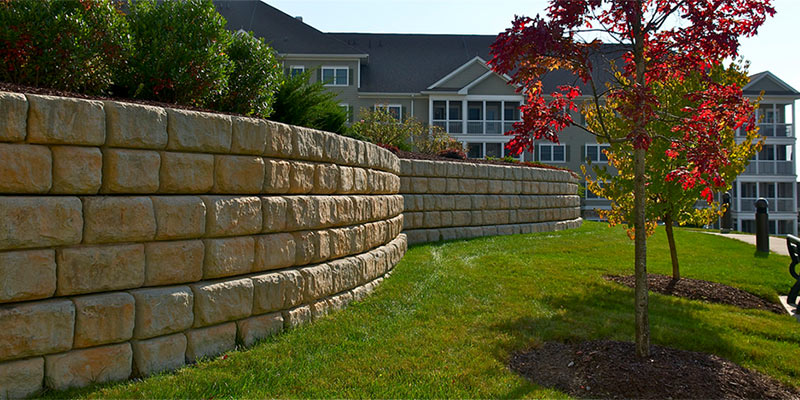
Retaining walls are so named because they retain or hold the soil behind it. Retaining walls are especially useful in keeping with different levels of soil at two different levels from each side.
Retaining walls can be made of wood, stones, bricks, or concrete. For residential uses, retaining walls are great to put in your backyard, and doing so can have a lot of benefits. Among the benefits that installing a retaining wall bricks in your backyard can bring are the following:
Protect your Home’s Foundation
The main purpose of a retaining wall is to hold soil in place. Retaining walls prevent the movement of soil, especially that which can be caused by flowing water. Without retaining walls, soil can get washed away with the water, and cause erosion, and in worse cases, landslides.
Especially when your house is built on a slope, retaining walls can help protect your home’s foundation when there is a lot of rainwater. Without retaining walls, the soil that your house stands on may be washed away bit by bit, until your home’s foundation becomes weak after some time. Retaining walls can stop the soil from being washed off so the soil stays in place. Retaining walls can also fortify your landscape so that potholes and pits would most likely not form.
Adds Value to Your Home
Retaining walls can add value to your home. Retaining walls can be made to be very attractive, and can increase interest in a home, should you have it for sale. Not a lot of homes get serious with their backyard landscaping, so homes that do so, like by having retaining walls, can provide help in making the backyard, and the whole house in the process, more attractive, and carry more value too.
Retaining walls can be made of bricks, river stones, boulders, and even wood, so you have a lot of choices on how you can make your home more beautiful. Choose materials that would work well with your home so that your retaining walls can complement, and not clash. If you’re able to pull it off nicely, your retaining wall can really add a lot of value to your home.
Prevents erosion
It has been mentioned above that retaining walls can help protect your home’s foundation by keeping the effects of erosion at bay. It’s best to discuss erosion better and focus more on preventing it.
Too much running water, especially one strong spot of rain, can wash off the soil. The effect can be very detrimental in the long run. The effect is worse for sloped landscape because gravity will play part in erosion as well.
With the help of retaining walls, water would be forced to seep into the ground instead of running on the surface and washing off the soil.
Creates a Built-in Sitting Area
Aside from keeping soil in place, retaining walls also make for a decorative piece that also can double as a place to sit. There are two ways to achieve this: to either make the walls wide and strong enough so you can sit on top, or go the extra mile and design the side to actually become like a bench.
Of course, to be comfortable enough for sitting down on, your retaining wall should be high enough, somewhere around 18 to 24 inches high, and this would mean having soil this high as well.
To make your retaining wall area a perfect and comfortable area in your backyard, add decent lighting, add some plants, and decorate it well.
Retaining walls are Low-Maintenance
Retaining walls make use of low-maintenance materials like stone, concrete, or sometimes wood. These are very weather-resistant materials that would last very long. There wouldn’t be much work needed to keep your retaining walls up. You might just need to retouch on the paint or other design once in a while, but other than that, your retaining walls would be able to withstand the elements in a long fight.
Best go for the stone or concrete options for maximum durability. These would also make them strong enough to sit on by anybody, and these would dry easily after getting wet but may stay hot for a while after being exposed to the sun.
